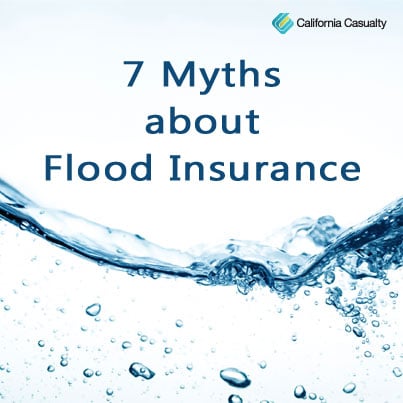If you live in a flood prone area, you should have flood insurance. It seems like common sense but many of us still don’t get it. As rivers crested to new heights and raging waters destroyed homes in Central and Southern Texas this spring, the Insurance Council of Texas fears that less than half of those with damage purchased a flood policy. Many thousands affected by record flooding in South Carolina may also be without flood insurance; state insurance companies estimate that only 10% of residents purchased flood protection.
Here are some reasons why people don’t buy flood insurance:
- They think their homeowners or renters insurance covers flooding
- They think the government will help them
- They think it’s too expensive
- They didn’t know it was available
Floods are the number one disaster in the United States and the National Flood Insurance Program estimates that just three inches of water in a 2,000 square foot house will result in $23,000 in damage.
With that in mind, let’s soak up seven myths that might be floating around about flood insurance.
- Flooding is covered under most homeowners insurance.
It is not. Homeowners and renters need to purchase separate flood insurance protection. Umbrella insurance does not usually cover flooding.
- I don’t live in a flood prone area so I don’t need it.
Every state in the union has experienced flooding and it can happen anywhere. The National Flood Insurance Program estimates that 25 percent of flood claims come from areas outside of high-risk flood zones.
- The Federal Government will help pay for flood damage.
Federal disaster assistance is only available when the president formally declares a disaster. The aid comes as low interest loans, not compensation for your damage.
- Flood insurance is only for homeowners and businesses.
Flood insurance is available to renters. It is also available to condo owners and renters. It will cover damage to your possessions from a flood.
- Flood Insurance is expensive.
The average policy costs about $700 per year: the higher your risk, the higher your premium. Keep in mind the average residential flood claim amounted to more than $38,000.
- I can get flood insurance coverage immediately.
In most cases there is a 30 day waiting period from the date you purchase the insurance before it goes into effect.
- I can shop around for the best flood insurance deal.
While you can purchase flood insurance from numerous companies, the price is set by the federal government and doesn’t vary. Rates do vary depending on your flood risk and the year and type of construction.
If you have experienced flood damage, here are some things you should be doing:
- Make sure the building is safe to enter – mud and water may contain dangerous chemicals, bacteria or poisonous snakes and there could be a risk from electrocution
- Secure the property from further damage or theft with plywood, tarps or plastic
- Remove branches and other debris
- Before cleanup, take photos or videos of all the damage
- Throw out water damaged food including canned goods
- Keep receipts for any items you buy to make temporary repairs and for living expenses, they may be covered if your loss is insured or can be used for tax purposes if the loss is not covered
- Contact your insurance company – flooding and other water damage to your vehicle is covered if you have comprehensive auto insurance
For more information about what is and is not covered with flood insurance, visit https://www.floodsmart.gov/floodsmart/pages/residential_coverage/whats_covered.jsp.
California Casualty can help keep you above water with flood insurance. Find out more today at 877.652.2638 or visit www.calcas.com/flood-insurance. Make sure your property is fully protected from wind, fire, lightning, hail or falling trees with a policy review by calling an advisor today at 1.800.800.9410 or visiting www.calcas.com.
Resources for this article:
https://www.thestate.com/news/local/article37740939.html
- California Casualty Earns Financial Stability Rating® of A, Exceptional, From Demotech, Inc. - April 28, 2025
- Music & Arts Grant Recipients – 2024 - December 13, 2024
- Understanding Auto and Home Insurance Rate Changes - December 3, 2024

